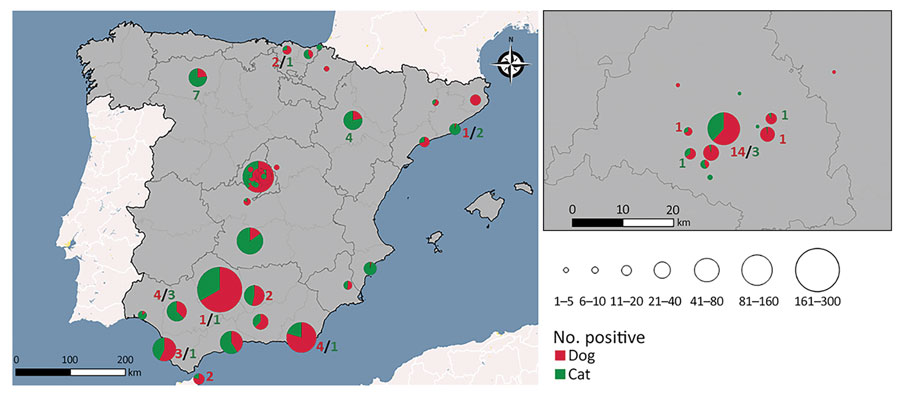Volume 29, Number 6—June 2023
Research
SARS-CoV-2 Seroprevalence Studies in Pets, Spain
Figure 1

Figure 1. Spatial distribution of sampled animals and those testing positive for SARS-CoV-2 by neutralizing antibodies in study of SARS-CoV-2 seroprevalence studies in pets, Spain. Map at right shows detail of boxed area at left. Red numbers indicate number of positive dogs; green numbers indicate number of positive cats.
Page created: April 04, 2023
Page updated: May 17, 2023
Page reviewed: May 17, 2023
The conclusions, findings, and opinions expressed by authors contributing to this journal do not necessarily reflect the official position of the U.S. Department of Health and Human Services, the Public Health Service, the Centers for Disease Control and Prevention, or the authors' affiliated institutions. Use of trade names is for identification only and does not imply endorsement by any of the groups named above.